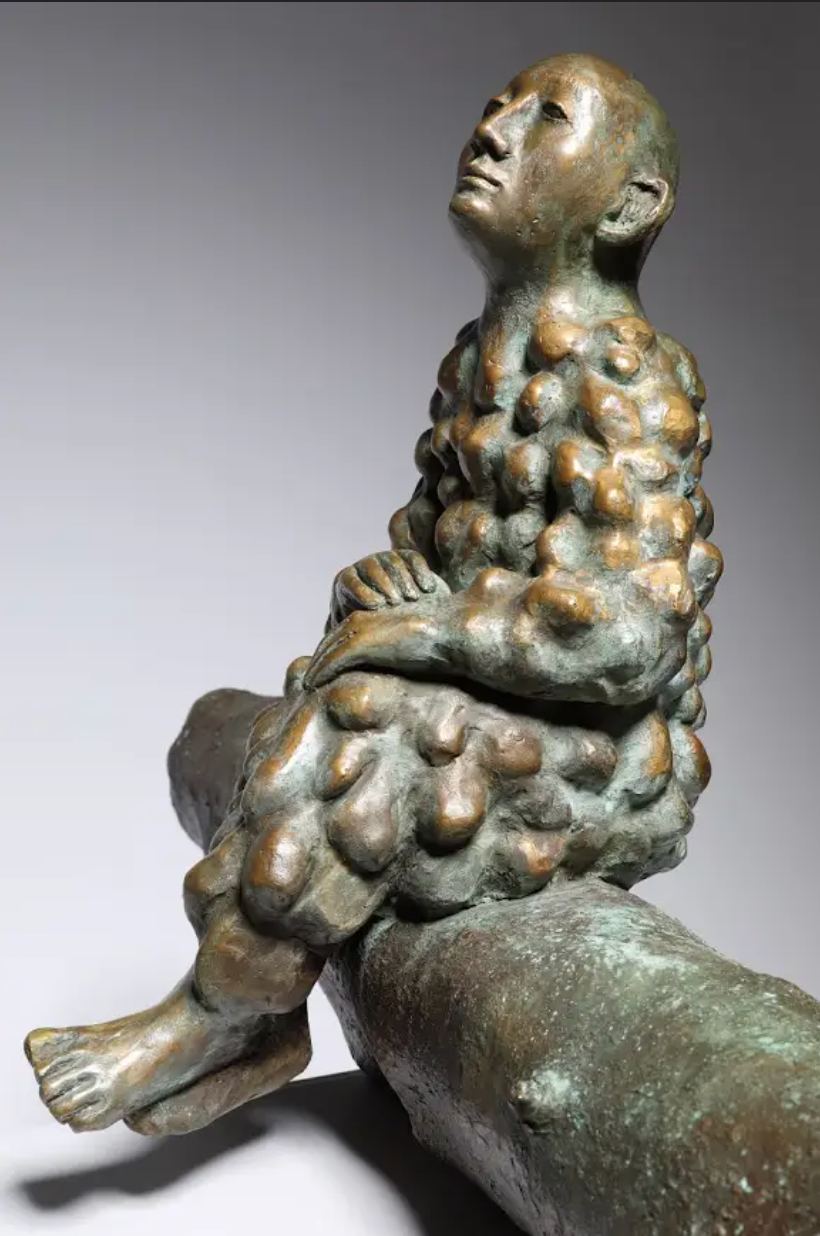
Sculptural models by the finalists for the next two editions of the Fourth Plinth commission that graces London’s Trafalgar Square have been revealed to the public.
The six finalists are Goshka Macuga, Teresa Margolles, Ibrahim Mahama, Nicole Eisenman, Paloma Varga Weisz, and Samson Kambalu, whose designs range from a monument to the trans community featuring 850 plaster facial casts to a giant space rocket.
The public can vote for its favorite sculpture online, but the final decision will be made by a panel chaired by journalist Ekow Eshun and featuring artist Jeremy Deller, broadcaster Jon Snow, and Iwona Blazwick, director of the Whitechapel gallery, reports the BBC.
Built in 1841, the Fourth Plinth was originally set to house an equestrian statue of William IV, but the funding fell through. The plinth remained empty until 1998, when the Royal Society for the encouragement of Arts, Manufactures and Commerce commissioned a trio of contemporary sculptures for the space. The Fourth Plinth Commissioning Group has been led by the Mayor of London’s Culture Team since 2005.
Heather Phillipson’s THE END sculpture for the Fourth Plinth is unveiled in London. Photo by David Parry/ PA Wire.
The exhibition program “brings great contemporary art to the heart of our city for free and encourages a lively conversation,” Justine Simons, deputy mayor for culture and the creative industries, said in a statement.
The current installation, a towering swirl of whipped cream topped with a giant cherry by Heather Phillipson, was delayed due to the pandemic, opening in late July instead of in March. On view through September 2022, was one of two works, along with Michael Rakowitz’s 2018 commission, The Invisible Enemy Should Not Exist, selected from a shortlist of five proposals in 2017.
See this year’s shortlisted works below.
Teresa Margolles
850 Improntas (850 Imprints)
Teresa Margolles, 850 Improntas (850 Imprints), 2021, model. Photo by James O’Jenkins, courtesy of the National Gallery, London.
Inspired by Mesoamerican Tzompantli, skull racks displaying the heads of ritual sacrifices and slaughtered enemies, 850 Improntas (850 Imprints) would feature plaster casts from the faces of 850 trans people. Many of the Mexican artist’s subjects will be sex workers, calling attention to marginalization of the trans community. The work will erode as it is exposed to the elements, washing away traces of genetic material transferred during the casting process and deteriorating individual facial features to create “a kind of anti-monument,” Margolles told the Guardian.
Goshka Macuga
GONOGO
Goshka Macuga, GONOGO, model. Photo by James O’Jenkins, courtesy of the National Gallery, London.
Macuga, a Polish artist based in the U.K., wants to plant a giant rocket on the plinth, poised to take off to the heavens. (The name is based on the status checks ahead of a rocket launch, but also recalls the debate over whether the nation should leave the European Union.) The piece would invite visitors to Trafalgar Square—often host to protests and rallies relating to political issues such as Brexit and climate change—to look upward and realize there is a broader universe beyond.
Ibrahim Mahama
On Hunger and Farming in the Skies of the Past 1957–1966
Ibrahim Mahama, On Hunger and Farming in the Skies of the Past 1957–1966, model. Photo by James O’Jenkins, courtesy of the National Gallery, London.
For his proposal, Mahama, who lives in Oxford, turned to the history of his native Ghana, where massive grain silos built by Eastern European architects were abandoned after the overthrow of President Kwame Nkrumah in 1966. The sculpture is based on a silo from the artist’s hometown of Tamale, overgrown after work ceased early in the building process.
Nicole Eisenman
Jewelry Tree
Nicole Eisenman, Jewellery Tree, model. Photo by James O’Jenkins, courtesy of the National Gallery, London.
Though Eisenman hails from the U.S., the artist has included several uniquely British objects among the trinkets hanging on their large-scale jewelry tree, some of which are specific to Trafalgar Square. Featuring both trash and treasure, there are pipes from Bloody Sunday protests and medals from Lord Nelson, who died leading the British to victory in the Battle of Trafalgar in 1805.
Paloma Varga Weisz
Bumpman for Trafalgar Square
Paloma Varga Weisz, Bumpman for Trafalgar Square, model. Photo by James O’Jenkins, courtesy of the National Gallery, London.
Born in Mannheim, Germany, Weisz looked to early 16th-century Wundergestalten pamphlets recording anomalies in the human body to create “Bumpman,” a man with bumps all over his body. The figure is both a manifestation of human insecurities and body dysmorphia, as well as the German folklore spirit known as the “Schrat.”
Samson Kambalu
Antelope
Samson Kambalu, Antelope, model. Photo by James O’Jenkins, courtesy of the National Gallery, London.
Kambaulu, who is from Malawi, based his work on a 1914 photograph of Baptist preacher John Chilembwe, who died leading an uprising against the British in 1915. He is shown with his friend, British missionary John Chorley, depicted life size. Chilembwe, who wears a hat despite a colonial rule forbidding Africans from doing so in the presence of white people, is in a monumental scale to remind the viewer of underrepresented groups in the history of the British Empire.
“Fourth Plinth Shortlist Exhibition” is on view at the National Gallery, Trafalgar Square, London, May 24–July, 4 2021.